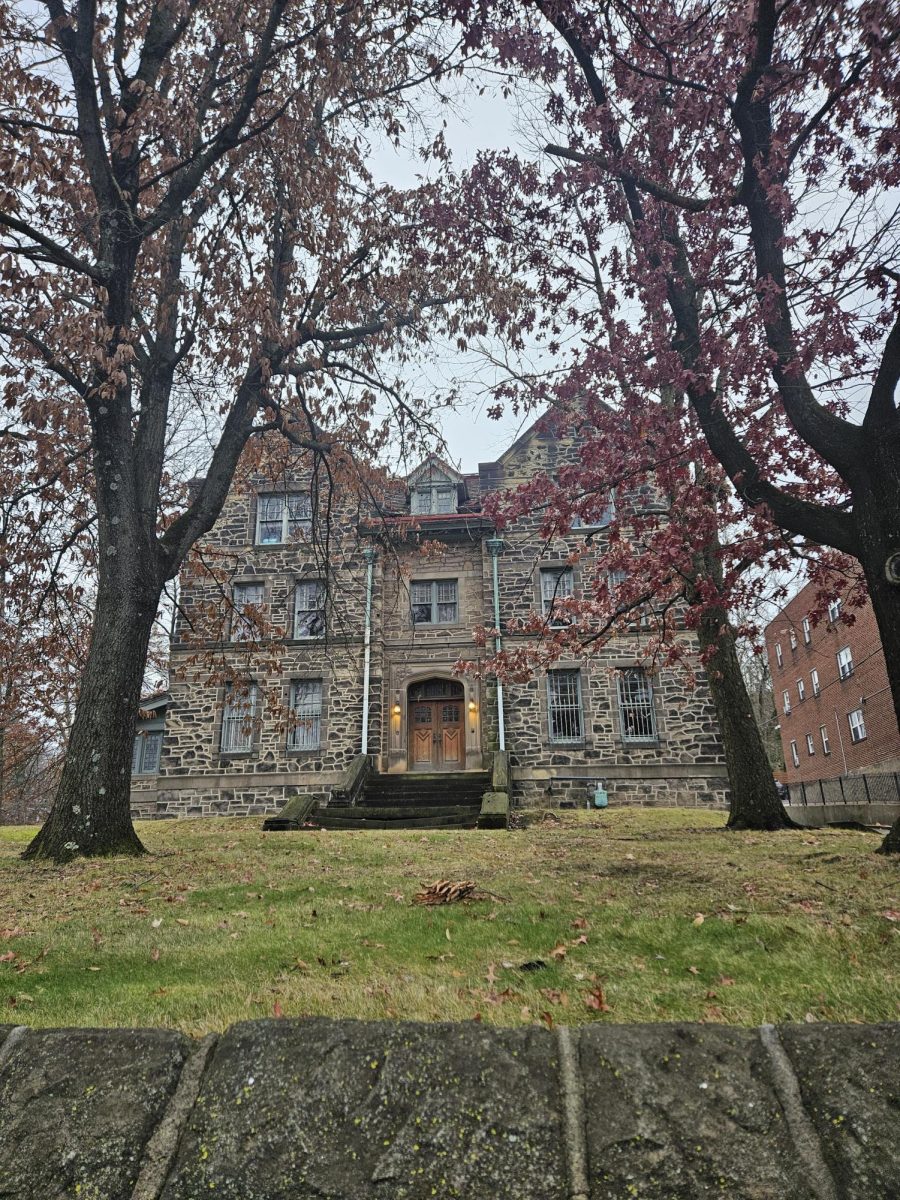By Chatham University’s entrance at Woodland Road on the Shadyside campus, the historic Thomson House is set to receive some updates. The building has stood for more than a century, and with the help of potential grants and funding, the University aims to address three main areas to renovate the Thomson House: electrical, plumbing and accessibility.
The three-story house at 5850 Fifth Ave. in Pittsburgh was constructed in 1909 and passed down for three generations, ending with Robert Thomson, who handled insurance for Chatham University. Upon his death in 2014, the house and all its contents were gifted to the University. However, the University did not have sufficient funds at that time to renovate the property.
“The challenge with historical preservation and redevelopment is finding the funds,” said Chatham University President Rhonda Phillips.
Dr. Phillips explained that the house had never been renovated since it currently had the knob and tube electrical system.
The Vice President of Marketing & Communications and a President’s Leadership Team member, Bill Campbell, expressed excitement that the University was gifted the property and that it is vital to the Institutional Master Plan. However, he mentioned that the next steps for the house and renovations will take time.
“Chatham had to assess the property, assess and value (and then sell) the contents and develop the plan/ideas to begin fundraising,” Campbell said. “This takes time and was not an immediate priority or need, so taking more time to do it right makes sense.”
Long-term maintenance and estimating how much money it would cost to renovate the Thomson House is not explicated or simply done.
“We think it’s somewhere between $2 million and $4 million, but we don’t know because, as with any old building, once you get in there, sometimes there’s things you didn’t see at first, but we do know electrical, plumbing and elevator are expensive,” Dr. Phillips said. “We’re hoping we can come in less than that, but if we get a grant, that’s going to go a long way in helping us renovate it.”
Besides bringing the building up to code, the goal for the renovations is to turn the Thomson House into a welcome center.
“It seems like an empty and desolate building to sit there year after year,” Dr. Phillips said. “It could have some student serving area, for example, perhaps the advancement and alumni offices, etcetera. We can think creatively about the use of the space.”
The welcome center will serve as a hub for individuals to receive information about the campus, Dr. Phillips said. It will cater to prospective and current students, parents, community members and alumni alike interested in learning about Chatham.
“As I understand it, this will be more of an Alumni Center with offices for advancement and other functions,” Campbell said.
The Vice President of Student Affairs, Dean of Students and a member of the President’s Leadership Team, Chris Purcell, spoke to the condition of the house as he visited it for the first time with Dr. Phillips.
“The ground feels a little shaky,” he said, “but it’s cool if you’re into history and things of that nature. It’s definitely cool, and it’s huge.”
Dr. Purcell described the house as a time warp, a museum and a horror movie. He was impressed with the house’s size and condition but acknowledged its potential, like moving one of the couches into Laughlin Hall.
With renovations, the University plans to keep the Thomson House’s historical feel regardless of what it transforms into. Campbell and Purcell discussed Dr. Phillips’s interest and aim to keep the house, as she describes it, as a campus jewel.
“I have worked in historic preservation for decades with my background in development and planning, so I’ve been a big advocate for bringing historic properties into new use so that it can be part of a community and not just let them degrade,” Dr. Phillips said. “We want to continue to offer transformational education experiences for all.”


